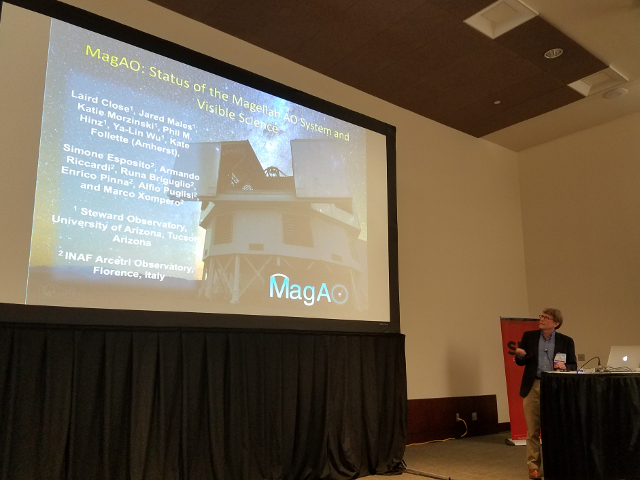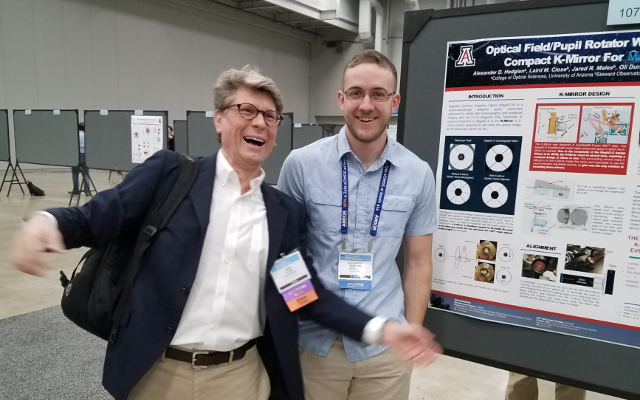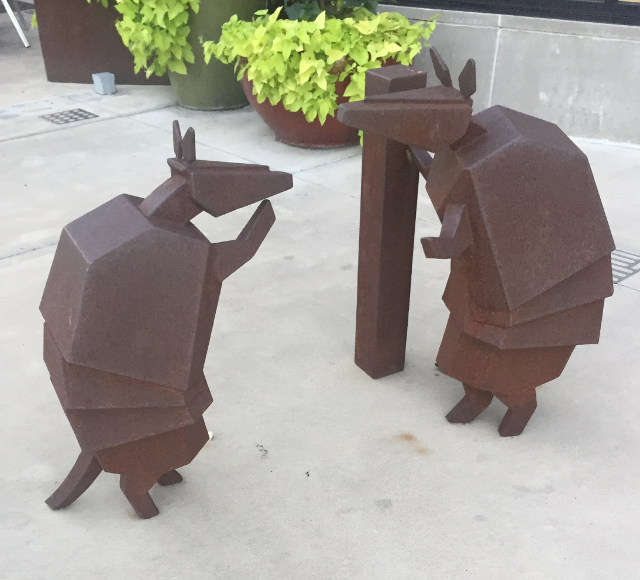To simplify maintenance, we’re making the MagAO-X blog a continuation of the MagAO blog. Going forward, we will be doing our project updates here on xwcl.science. I did my best to migrate things without breaking references to our previous nine years (!) of posts. However, if you notice any broken links to visao.as.arizona.edu, do let me know.
Blog
MagAO-X gets sporty
As originally reported on the Steward Observatory website, and archived here for posterity:
On Jan 17, NBA Hall of Famer, one of “50 Greatest Players in NBA History,” and iconic Deadhead Bill Walton came to town to be the color commentator for the UA-Oregon men’s basketball game. Whenever Walton is a commentator ESPN has a 2-minute feature called “Walton’s World.” In this episode, Bill visited the MagAO-X lab at Steward!
Congratulations to Dr. Miller, MagAO-X’s newly minted PhD!
This is a late post, but on November 16, 2018, Kelsey Miller successfully defended her Ph.D. dissertation! Congratulations, Dr. Miller!
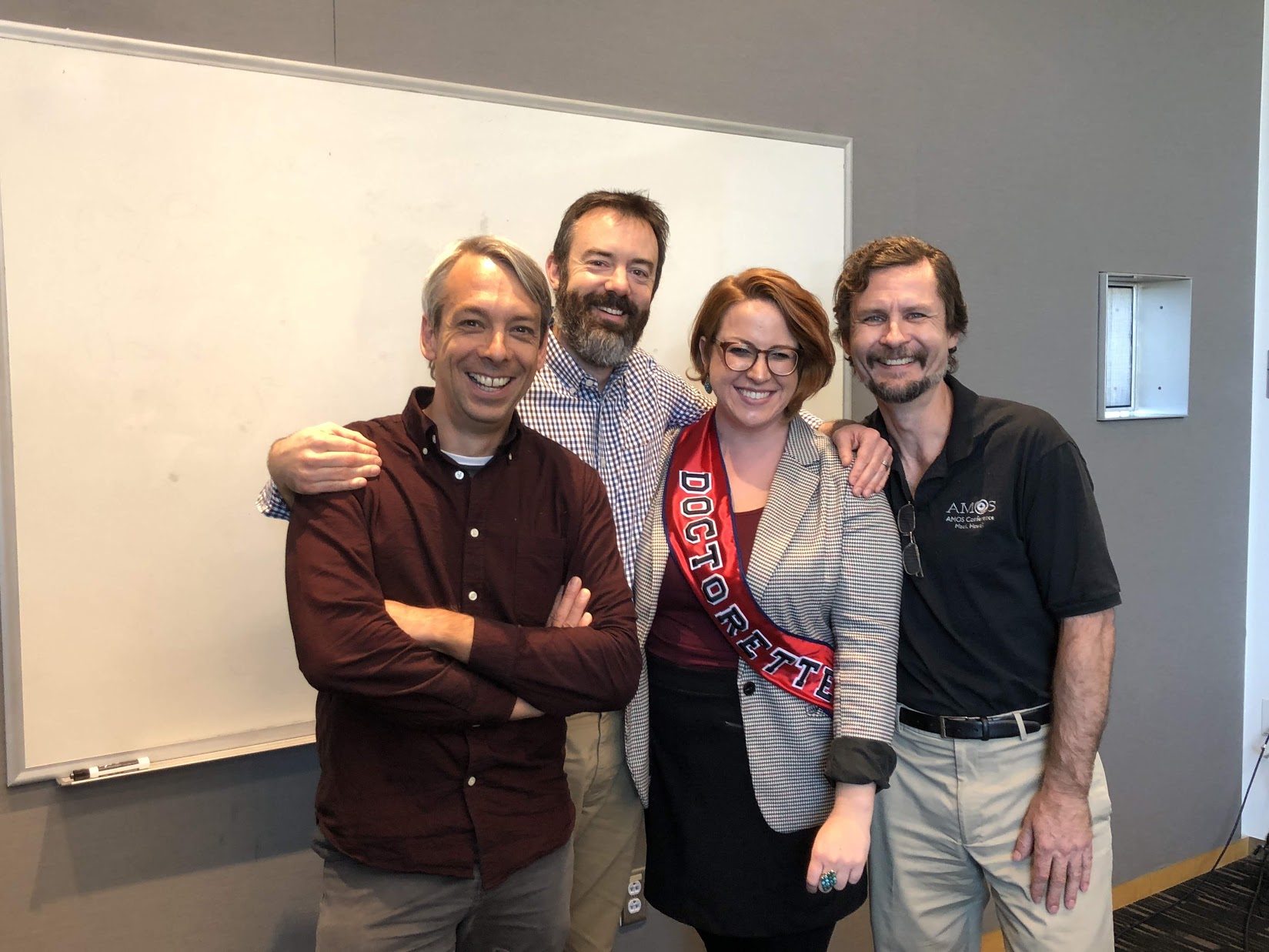
Kelsey’s research is on Linear Dark Field Control (LDFC), a focal plane wavefront sensing technique where she monitors the bright field speckles and uses their linear nature to maintain stability in the dark hole. She has been developing LDFC using the MagAO-X pupil and vAPP coronagraph design. You can learn more about Kelsey’s work in LDFC (JATIS, arXiv) and how LDFC will work with MagAO-X (SPIE, arXiv).
Kelsey is off to cooler climates at Leiden Observatory in the Netherlands, who have been our collaborators with the vAPP coronagraph. She will be a postdoctoral researcher with Frans Snik, continuing her work on LDFC to get it working on sky. We will miss you tremendously!
Taking delivery of the MagAO-X vAPP coronagraph
On September 17, 2018, we got our first look at the MagAO-X vAPP (that’s “vector apodizing phase plate”) coronagraph optic. Kelsey Miller had been working with the phase pattern for a long time, but there’s something special about holding it with your own hands. Or, at any rate, watching the P.I. hold it with his own hands.
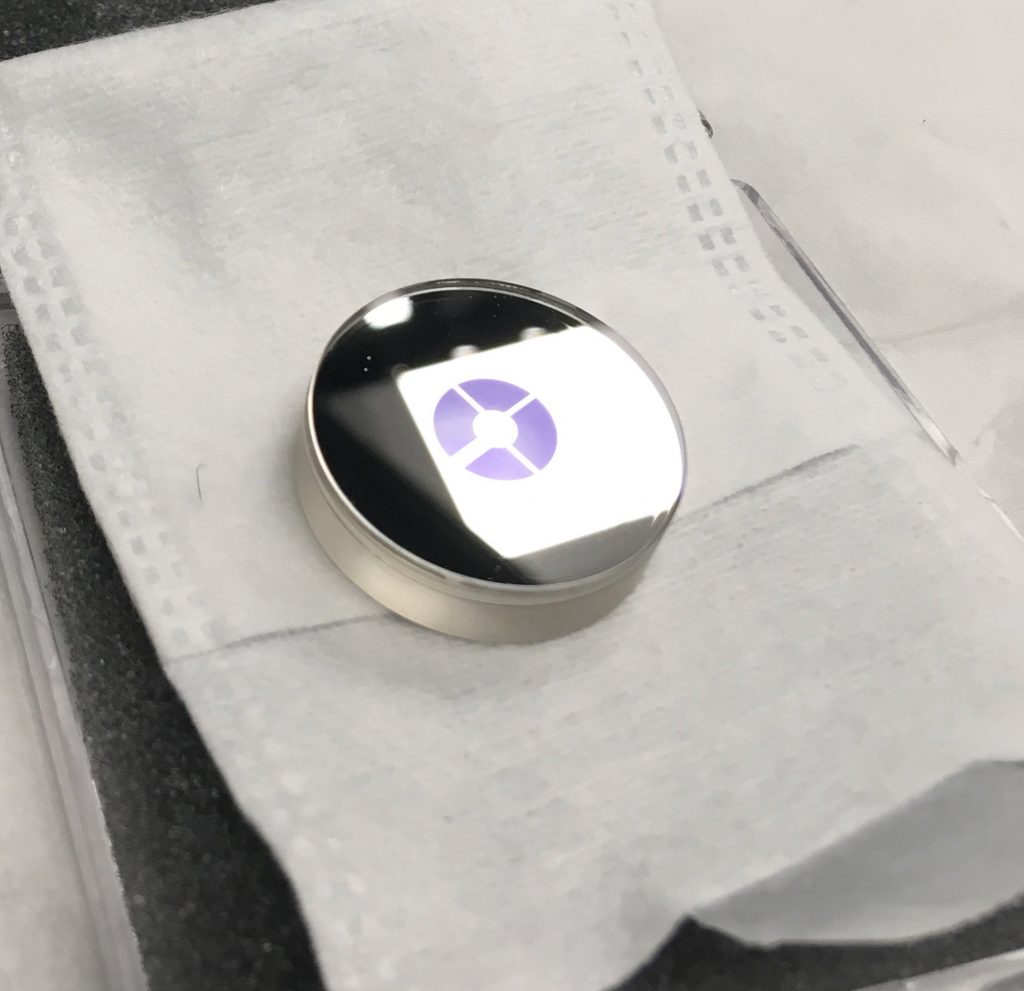
Despite the complicated phase pattern, it looks pretty much clear except for the reflective mask. At extreme angles, you can get some purple from (I think) an AR coating. 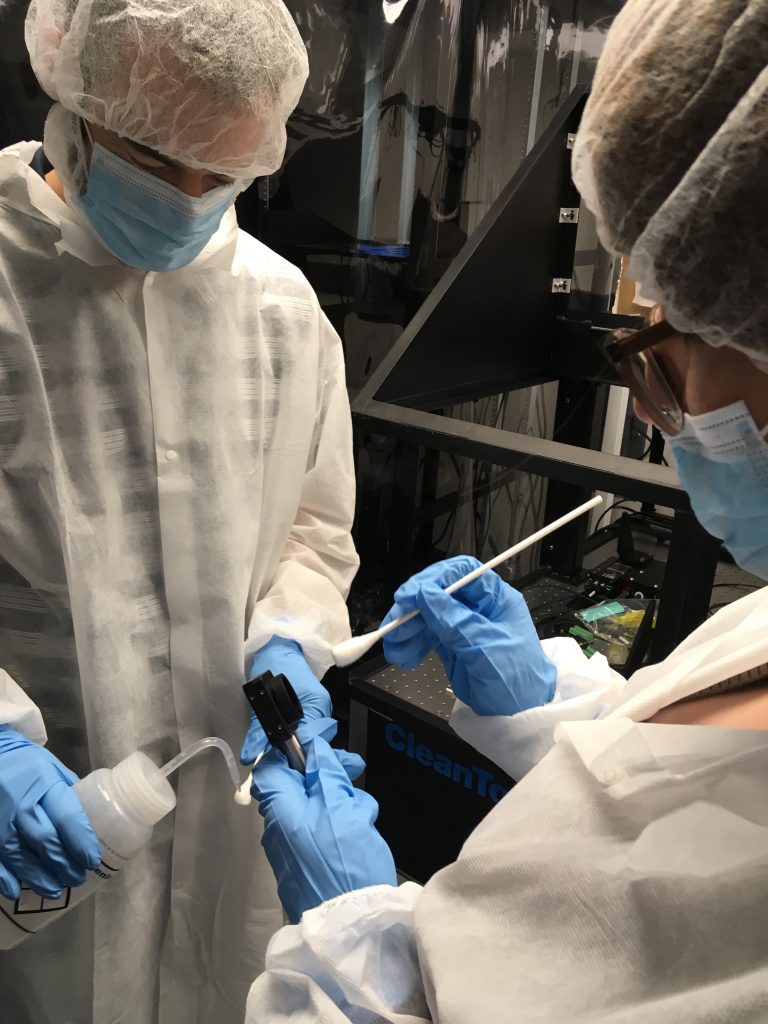
Jared and Kelsey clean the hardware to hold the vAPP. 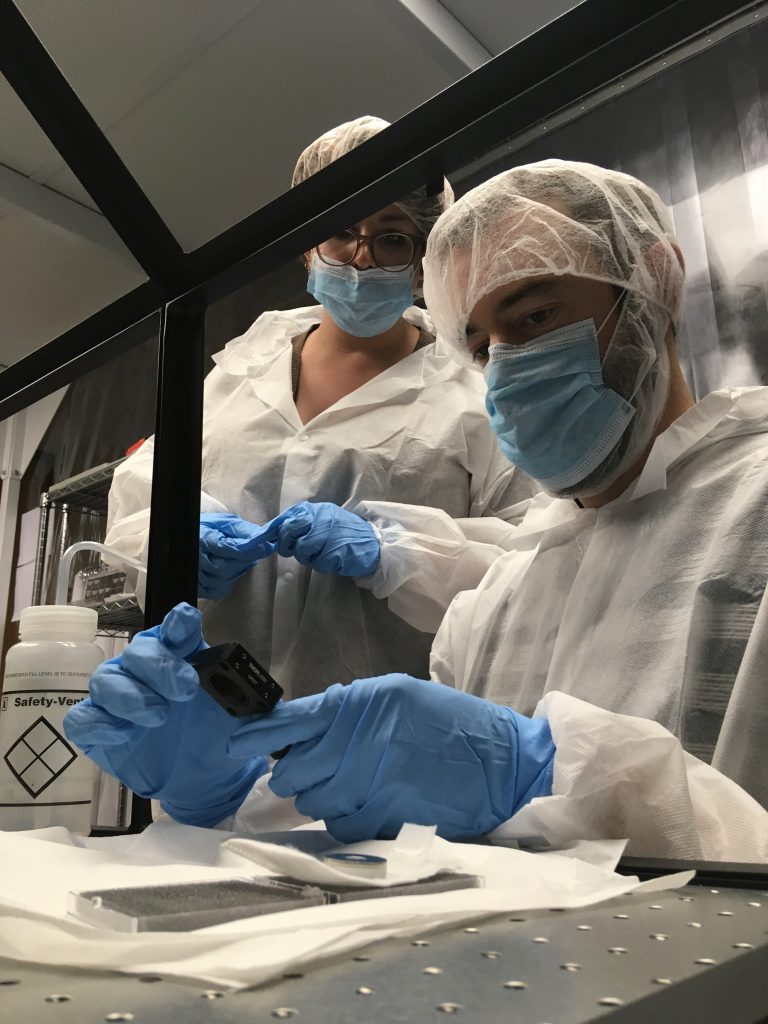
Jared inserts the vAPP in the holder… 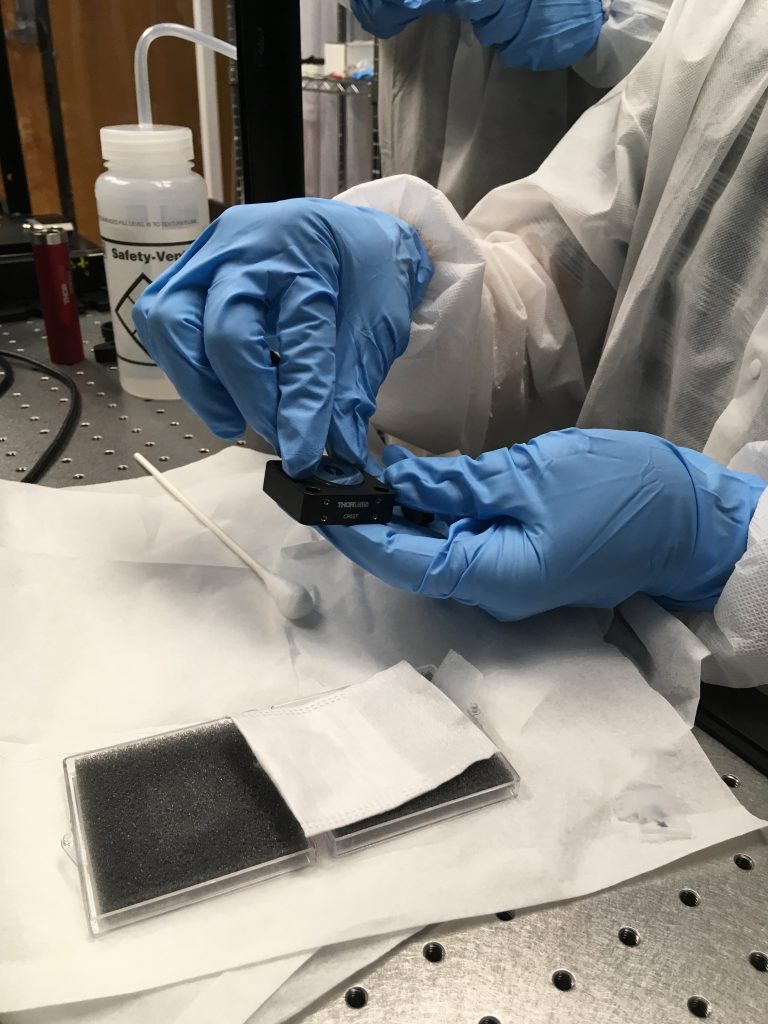
…and in it goes!
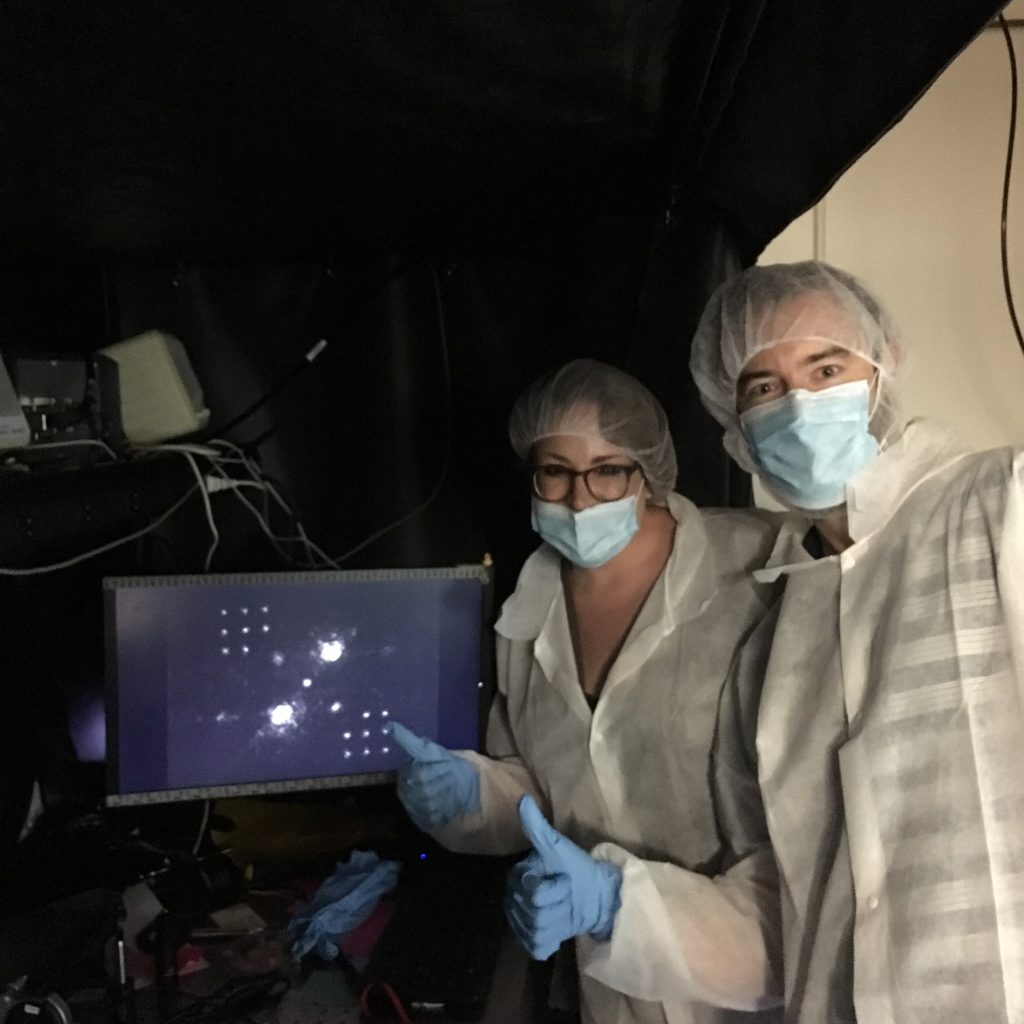
MagAO-X @ SPIE Astronomical Telescopes + Instrumentation 2018
This past week, the MagAO-X team attended the SPIE Astronomical Telescopes + Instrumentation conference in Austin, TX. Here’s a recap of all of our presentations at the conference.
Let’s start off with the talks. Jared kicked off our presentation collection with a talk on the MagAO-X update:
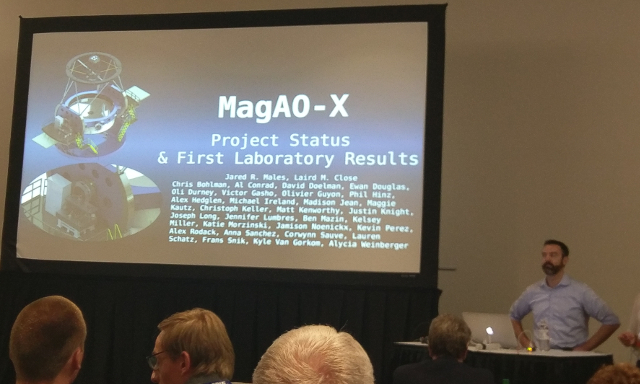
Laird gave an update on MagAO:
Kelsey gave a fantastic talk on the vAPP for MagAO-X and Linear Dark Field Control:
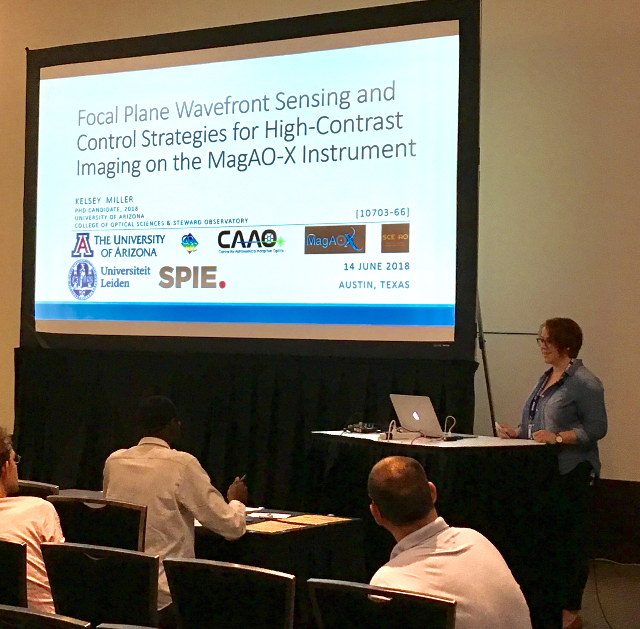
Lauren gave an awesome talk on her PyWFS PYRITE sims:
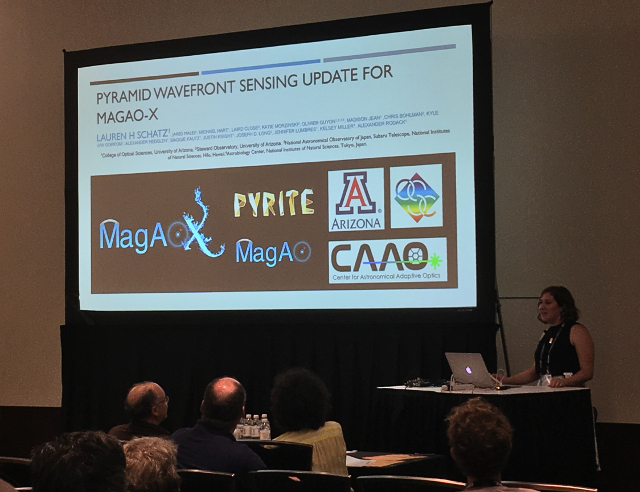
Justin presented PIAACMC designs for SCExAO/GMT/MagAO-X:
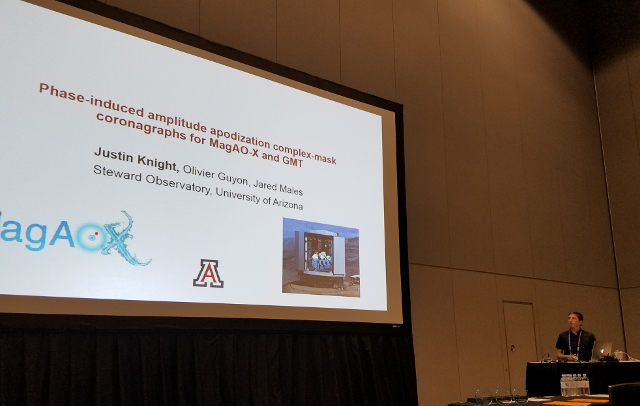
The rest of us had poster presentations:
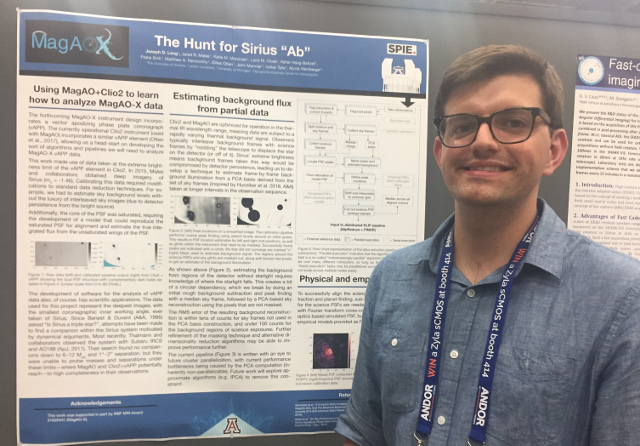
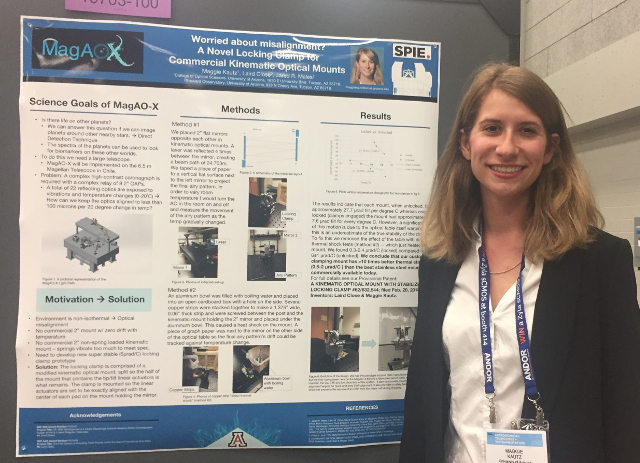
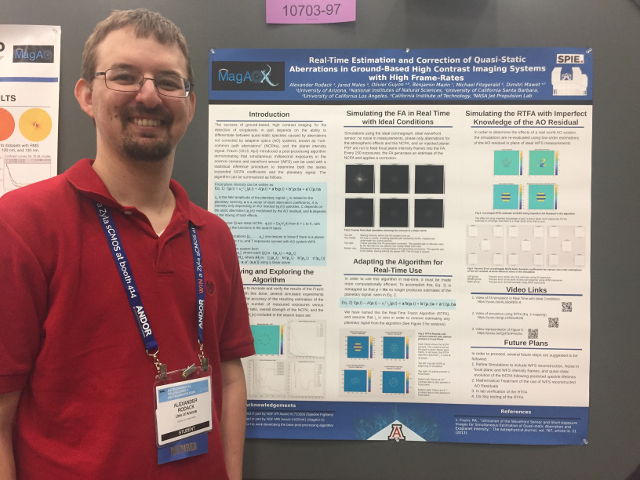
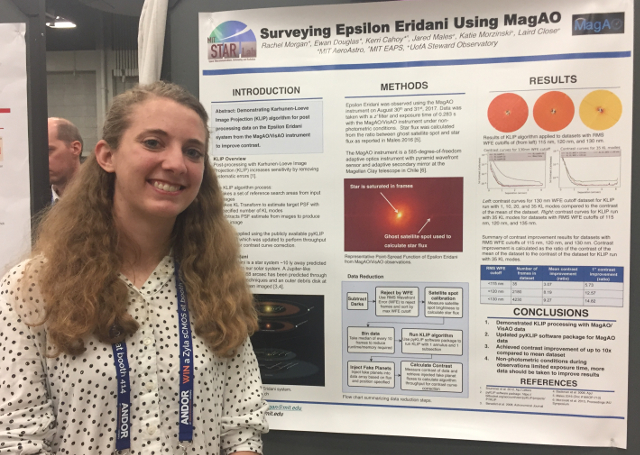
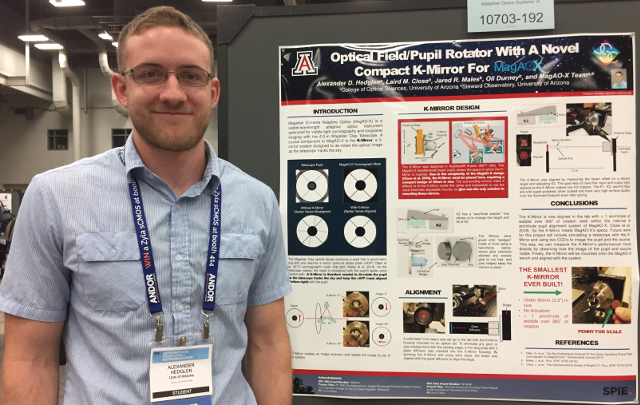
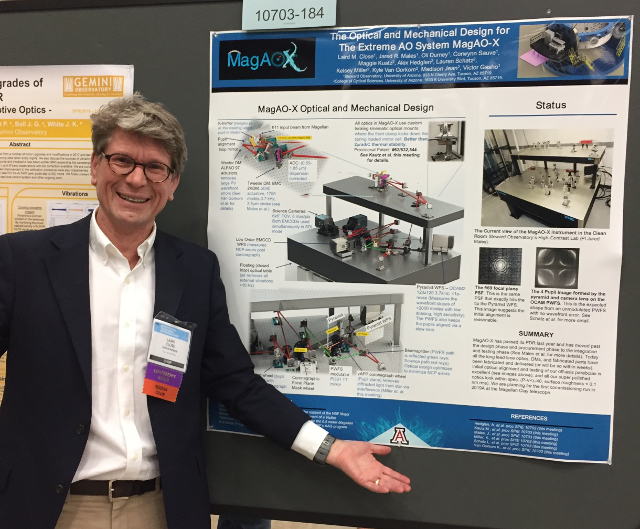
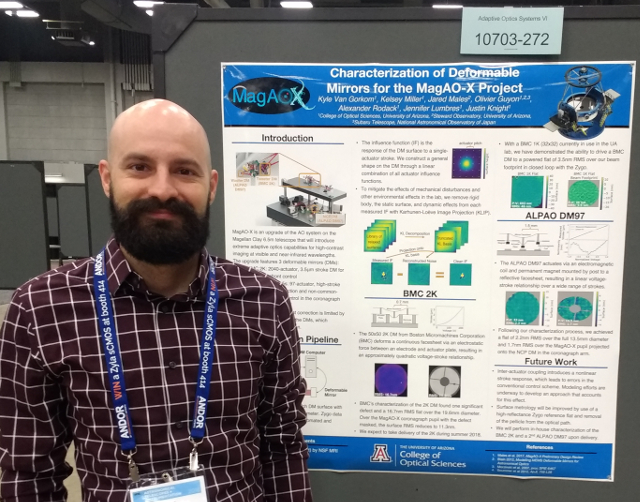
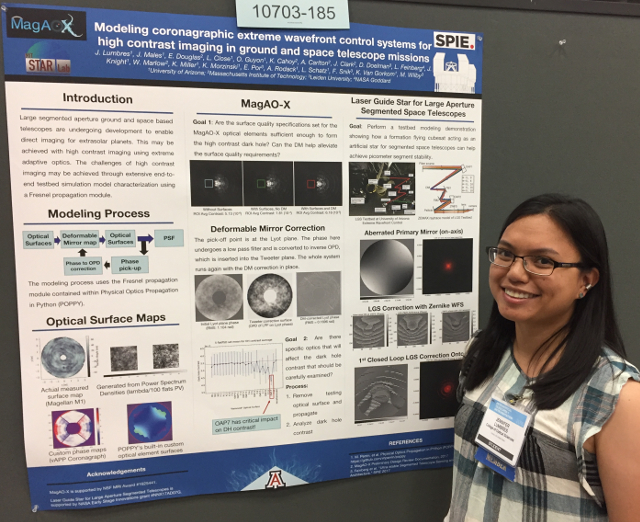
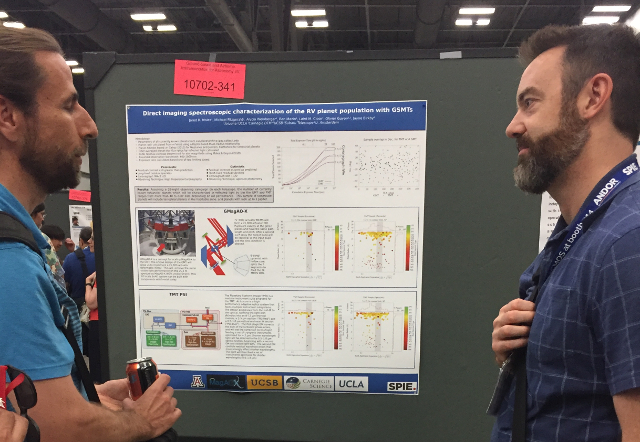
Here’s some shenanigans from the conference and in Austin:
Jared’s talk crashed several times once during his presentation. It turns out, LibreOffice and the SPIE talk upload system disagree with each other, particularly with how to handle Lauren’s 700 KB flaming logo. When transitioning to the next talk, MagAO-X refused to leave the screen.
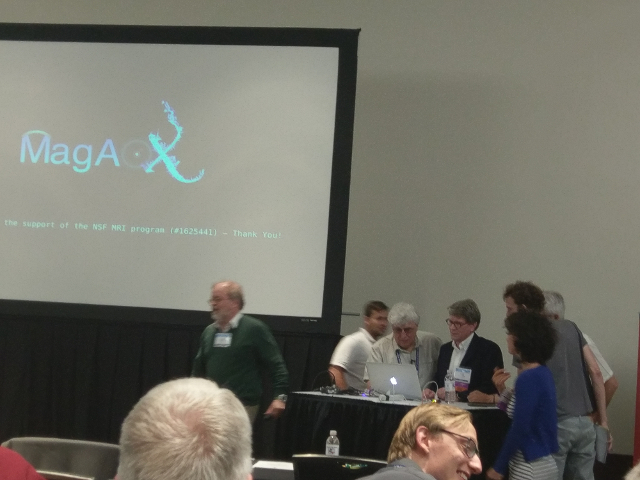
According to Laird, later in the week, Lauren’s MagAO-X logo came back to shutdown another talk. The computer tried to “recover” Jared’s talk and so the solution was to kill it outright. MagAO-X came back with a vengeance it seems.
In accordance to the SPIE Astronomical Telescopes + Instrumentation 2016 conference, this time Jared and Olivier were sitting together as opposed to being in the same room at the same time:
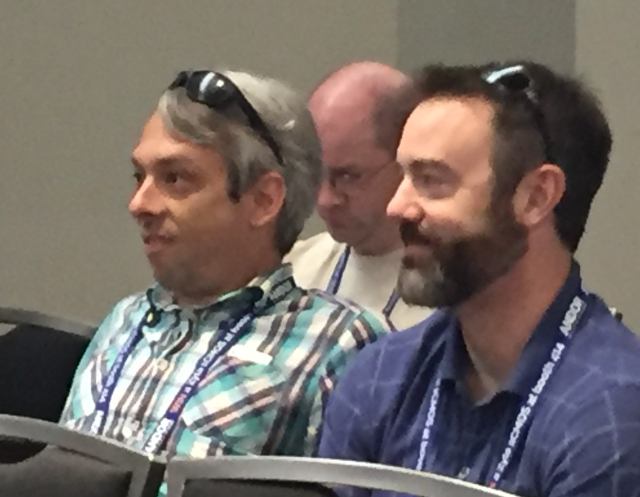
Despite the heat and humidity, Austin was a great conference location.
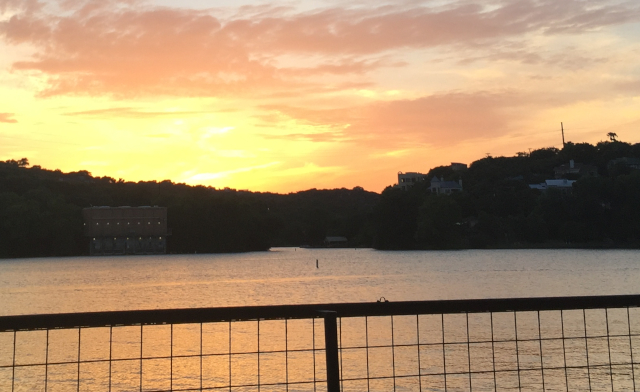
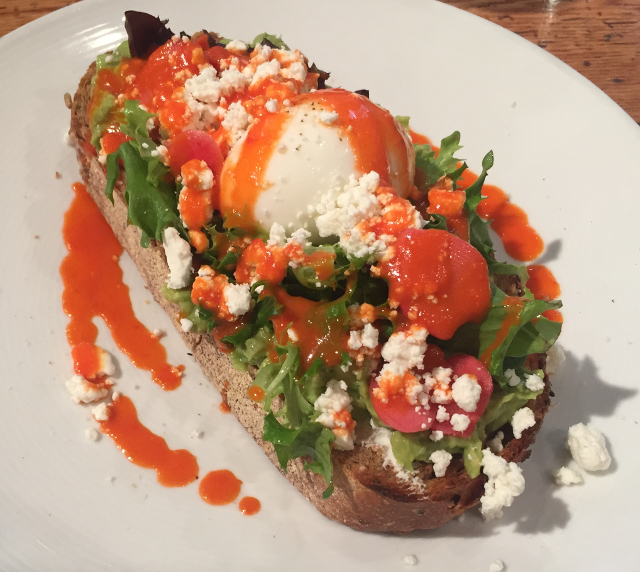
And so concludes SPIE Astronomical Telescopes + Instrumentation 2018. It was a fantastic time seeing everyone, meeting new people, attending talks, and presenting research. To close off, here’s a quote from the MagAO-X PI:
Jared: “All deficiencies in your presentations have been noted and will be addressed in due course.”
